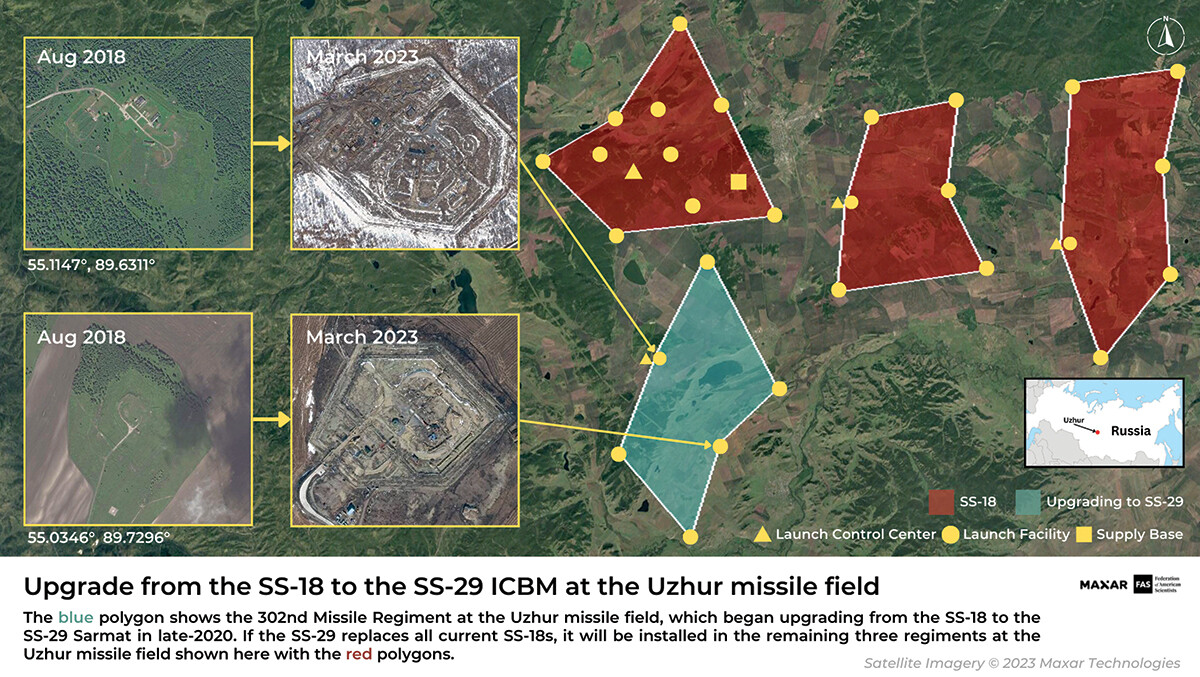
Nuclear Notebook: Russian Nuclear Weapons, 2023
The FAS Nuclear Notebook is one of the most widely sourced reference materials worldwide for reliable information about the status of nuclear weapons, and has been published in the Bulletin of the Atomic Scientists since 1987. The Nuclear Notebook is researched and written by the staff of the Federation of American Scientists’ Nuclear Information Project: Director Hans M. Kristensen, Senior Research Associate and Project Manager Matt Korda, and Research Associate Eliana Johns.
This issue’s column examines Russia’s nuclear arsenal, which includes a stockpile of approximately 4,489 warheads. Of these, some 1,674 strategic warheads are deployed on ballistic missiles and at heavy bomber bases, while an approximate additional 999 strategic warheads, along with 1,816 nonstrategic warheads, are held in reserve. The Russian arsenal continues its broad modernization intended to replace most Soviet-era weapons by the late-2020s.
Read the full “Russian Nuclear Weapons, 2023” Nuclear Notebook in the Bulletin of the Atomic Scientists, or download a PDF using the button on the left side of this page. The complete archive of FAS Nuclear Notebooks can be found here.
The FY2026 National Defense Authorization Act (NDAA) paints a picture of a Congress that is working to both protect and accelerate nuclear modernization programs while simultaneously lacking trust in the Pentagon and the Department of Energy to execute them.
While advanced Chinese language proficiency and cultural familiarity remain irreplaceable skills, they are neither necessary nor sufficient for successful open-source analysis on China’s nuclear forces.
Satellite imagery has long served as a tool for observing on-the-ground activity worldwide, and offers especially valuable insights into the operation, development, and physical features related to nuclear technology.
This report outlines a framework relying on “Cooperative Technical Means” for effective arms control verification based on remote sensing, avoiding on-site inspections but maintaining a level of transparency that allows for immediate detection of changes in nuclear posture or a significant build-up above agreed limits.